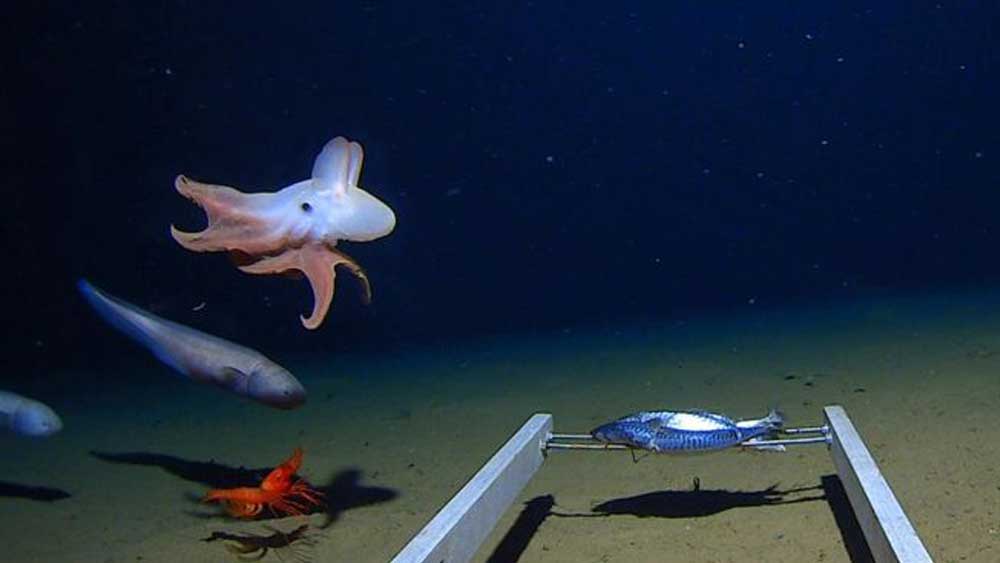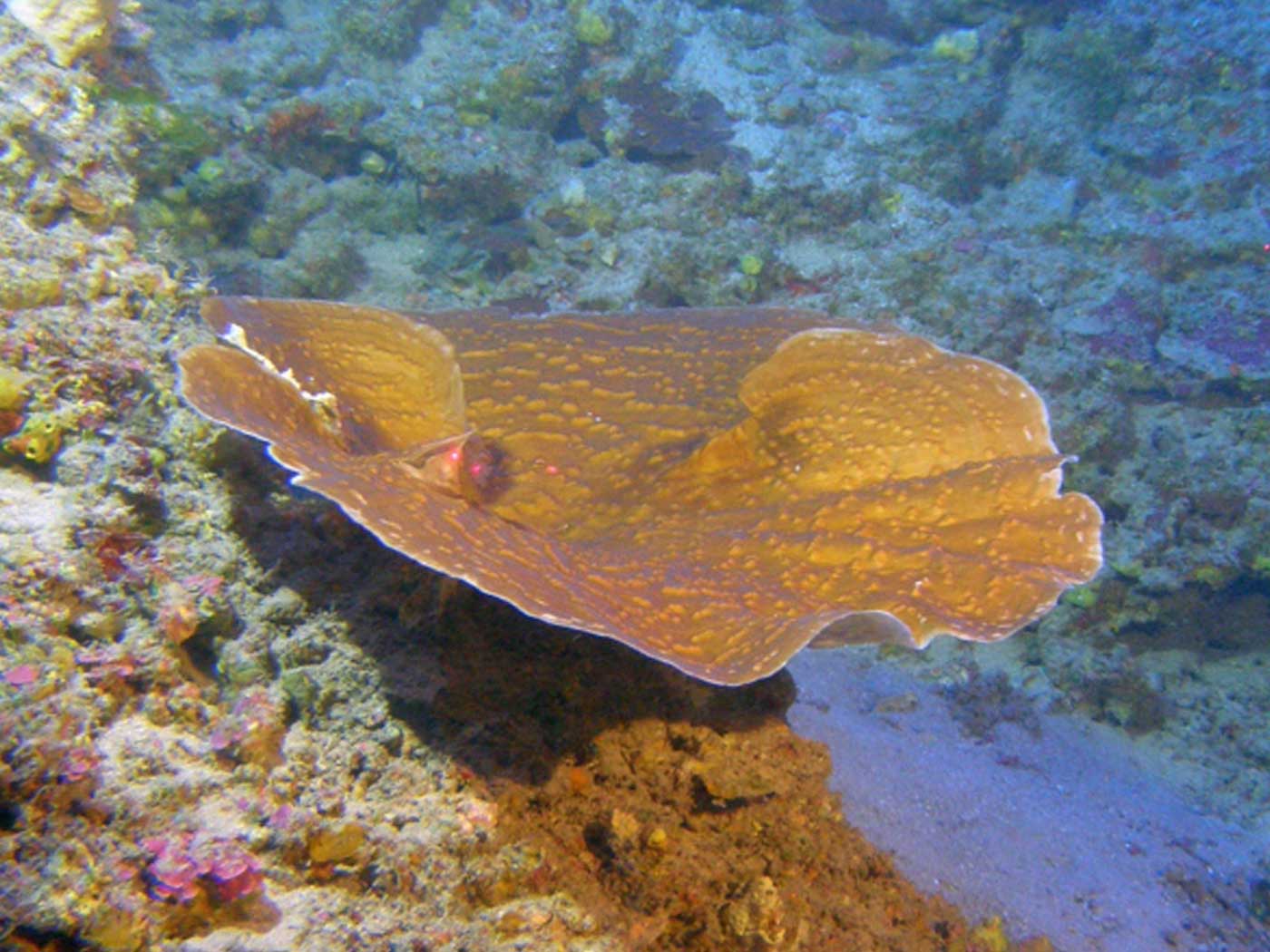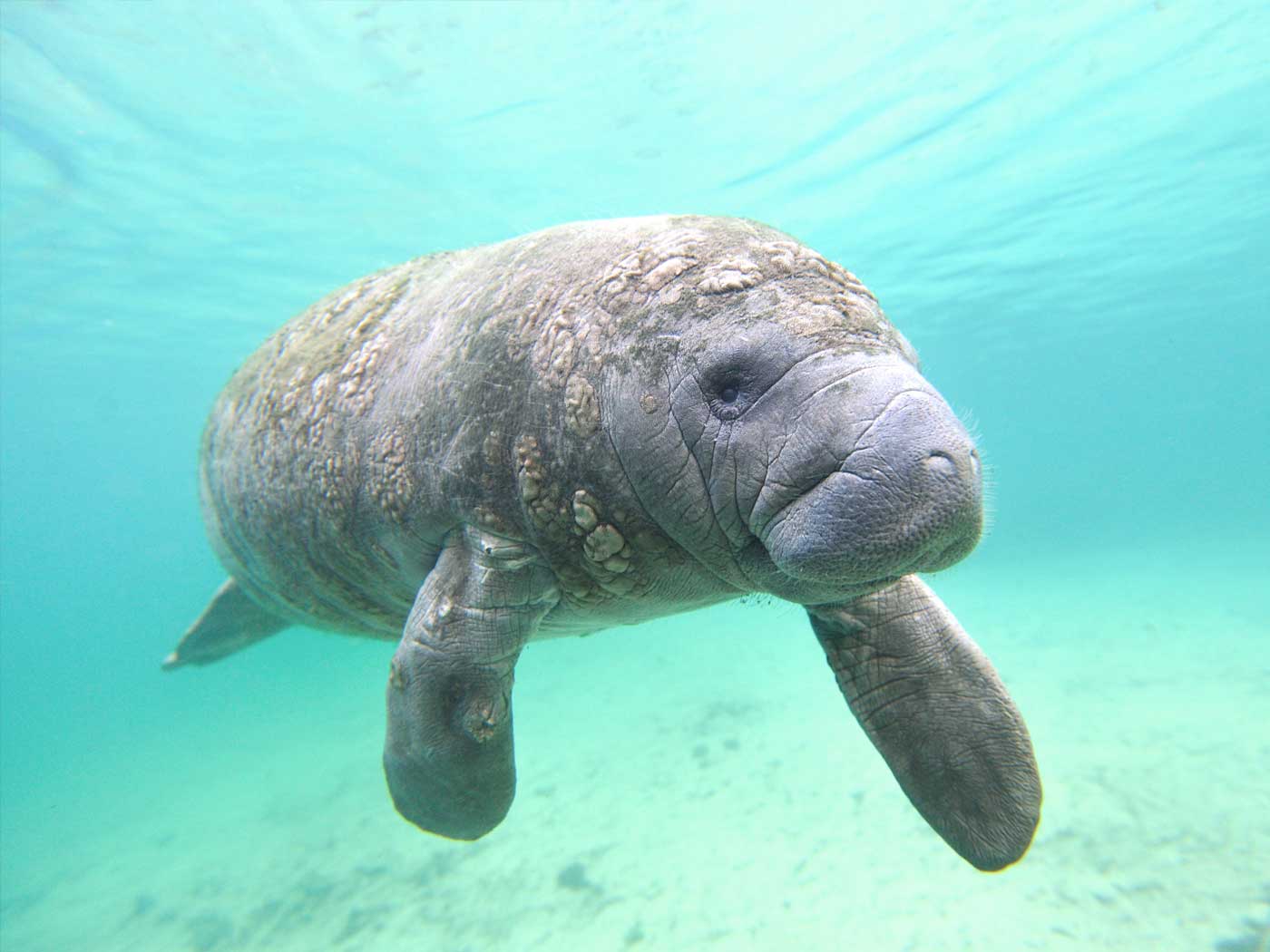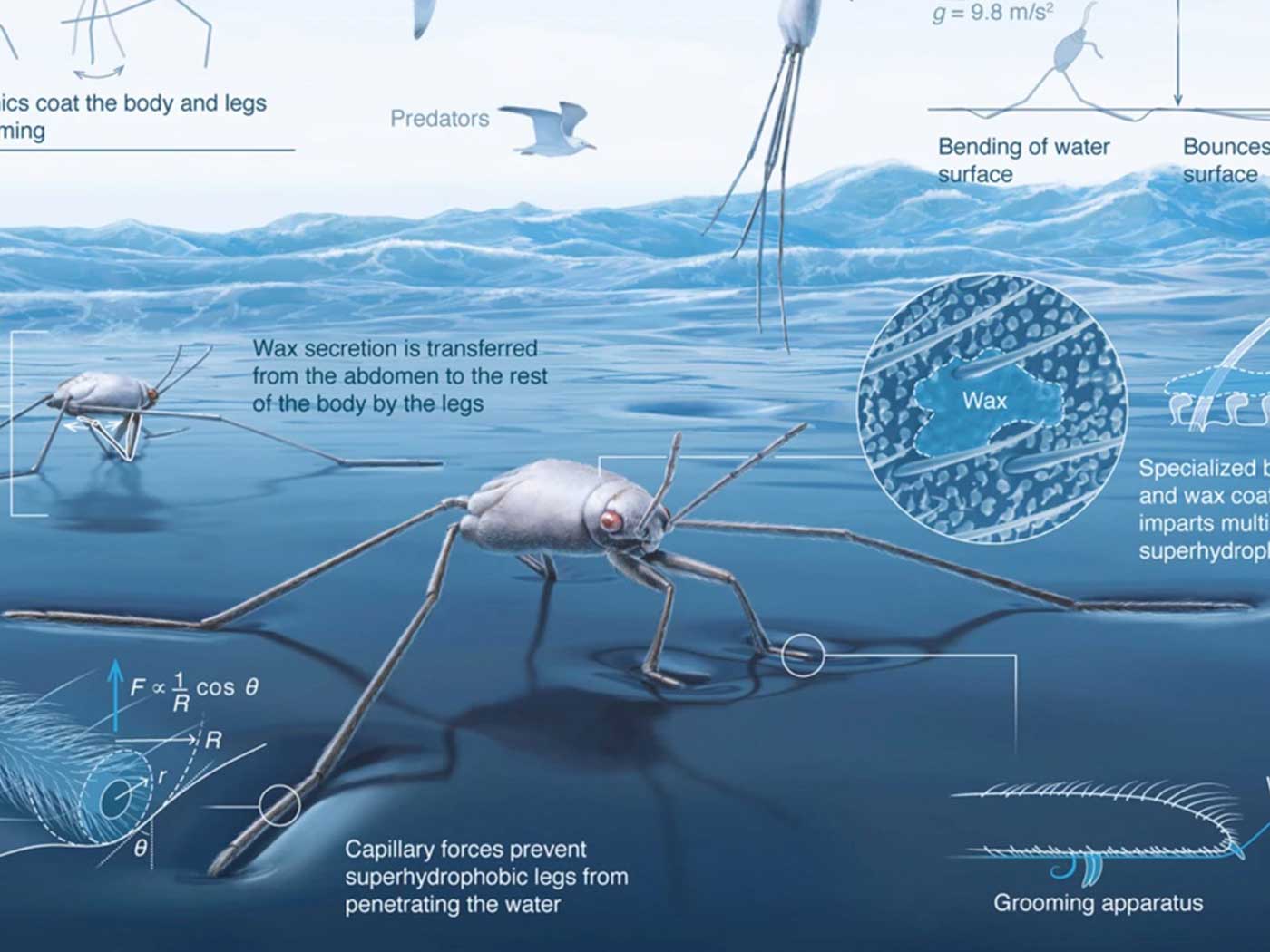The deepest ever sighting of an octopus has been made by cameras on the Indian Ocean floor. The animal was spotted 7,000m [equivalent to 21,000 feet deep!] down in the Java Trench—almost 2km [~6000 feet] deeper than the previous reliable recording.2
The technical report on this stupendous discovery—what is called a “Dumbo” octopus2—recently appeared in an article by marine biologists Dr. Alan Jamieson (of Newcastle University) and Dr. Michael Vecchione (of Virginia Institute of Marine Science) and published in the journal Marine Biology. But how did those marine biologists get photos of a “Dumbo” octopus on the bottom of the Indian Ocean’s 21,000-feet-deep Java Trench?
The scientist behind the [Dumbo octopus] identification is Dr Alan Jamieson … [who] pioneered the exploration of the [ocean’s] deep using what are called "landers". These are instrumented frames dropped overboard from research ships. They settle on the seabed and record what passes by. Dr Jamieson's equipment filmed two octopuses—one on a drop to 5,760m and a second to 6,957m. The individual animals were 43cm and 35cm in length.2
Amazing! And the ability of these cephalopods to survive at such incredible depths—with their unimaginable pressures—cannot be adequately explained apart from God’s providential bioengineering.
Octopus fragments and eggs have been found at very great depths, but until this discovery, the previous deepest reliable sighting was at 5,145m down. That was a black and white photo of an animal taken 50 years ago in the Caribbean.2
The Cephalopoda are not typically considered characteristic of the benthic fauna [i.e., sea-bottom animals] at hadal depths (depths exceeding 6000 m [i.e., deeper than 18,000 feet]), yet occasional open-net trawl samples have implied that they might be present to ~ 8000 m [~24,000 feet] deep. Previous in situ photographic evidence has placed the deepest cephalopod at 5145 m. The discrepancies between the two have meant that the maximum depth for cephalopods has gone unresolved.3
The Cephalopoda are not typically considered characteristic of the benthic fauna [i.e., sea-bottom animals] at hadal depths (depths exceeding 6000 m [i.e., deeper than 18,000 feet]), yet occasional open-net trawl samples have implied that they might be present to ~ 8000 m [~24,000 feet] deep. Previous in situ photographic evidence has placed the deepest cephalopod at 5145 m. The discrepancies between the two have meant that the maximum depth for cephalopods has gone unresolved.3
The world’s oceans have many deep places, where previously it was assumed that no such animals could live. This new discovery proves that these cephalopods are much more capable of surviving Earths’ oceanic depths than was originally believed.4
We now know that their potential habitat covers not just 75% of the ocean bottoms, but more like 99%!
The significance of the Indian Ocean observations is that we now know that octopuses can find potentially suitable habitat across at least 99% of the global seafloor. But those animals that do live at depth will clearly need some special adaptations, says Dr Jamieson.2
In this study we report on unequivocal sightings, by HD video lander, of a cephalopod at hadal depths. The demersal cirrate octopod Grimpoteuthis sp. was observed at both 5760 and 6957 m in the Indian Ocean. These observations extend the known maximum depth range for cephalopods by 1812 m and increase the potential benthic habitat available to cephalopods from 75 to 99% of the global seafloor….3
A distribution of 0–5145 m, gives octopods access to ~ 75% of the total ocean floor. This new extension to 7000 m adds another 24%, bringing the theoretically accessible area of global seafloor to 99%; all but the deepest few thousand metres that diminish exponentially in area with increasing depth.3
In this study we report on unequivocal sightings, by HD video lander, of a cephalopod at hadal depths. The demersal cirrate octopod Grimpoteuthis sp. was observed at both 5760 and 6957 m in the Indian Ocean. These observations extend the known maximum depth range for cephalopods by 1812 m and increase the potential benthic habitat available to cephalopods from 75 to 99% of the global seafloor….3
A distribution of 0–5145 m, gives octopods access to ~ 75% of the total ocean floor. This new extension to 7000 m adds another 24%, bringing the theoretically accessible area of global seafloor to 99%; all but the deepest few thousand metres that diminish exponentially in area with increasing depth.3
This seemingly impossible ability of octopi to survive 21,000 feet below the ocean’s surface should prompt us to praise the Lord for these “wonders in the deep.”1
However, secular-thinking evolutionists try to dodge the obvious truth. They speak in vague terms of such creatures somehow “evolving” necessary “adaptations”—as if merely using those words was an excuse to ignore evidence of God’s Creatorship!
"They'd have to do something clever inside their cells. If you imagine a cell is like a balloon—it's going to want to collapse under pressure. So, it will need some smart biochemistry to make sure it retains that sphere," the scientist [Dr. Jamieson] explained. "All the adaptations you need to live at pressure are at the cellular level."2
Really “smart biochemistry” indeed! Only the God of the Bible can make that kind of biochemistry work! Yet this is not the first time that ICR has reported on the astounding traits that God has installed into cephalopods—like octopi, squids, and cuttlefish.
Consider the mimic octopus, which mimics its environmental surroundings—or impersonates some other sea creature.5
The mimic octopus is, frankly, incredible. It can alter its shape, texture, and color to match poisonous and colorful sea creatures so accurately that it eluded detection by marine biologists for decades.5
Thus, because of its astonishing traits of both habitat-matching and other-animal-copying mimicry, the mimic octopus exhibits God’s all-wise bioengineering.
[The mimic octopus has] … unique and well-fitted features--including the length of its tentacles, the tiny muscles in its skin, the special color-generating skin cells and connected nerves, the appropriate cognitive processing programs used to coordinate all those features, and the instinct to mimic specific creatures—had to have been put in place by a person. In John [chapter] 1, the Bible identifies that person as the Creator and Lord Jesus Christ.5
Likewise, consider the squids—which likewise appear “invisible” (hidden in plain view) when they “turn on” their camouflage patterns and colors to blend into their immediate surroundings.6
Imagine having skin that can mimic your surroundings, or even make you invisible. The Hawaiian bobtail squid (Euprymna scolopes) in the central Pacific has just such an astounding ability. It is designed with special proteins called reflectins that are as beautiful to view as they are amazing in their role. … Biophotonic structures [electromagnetic radiation harnessing systems] of the bobtail squid give it the ability to actually control how it reflects the sunlight that shines on its body.8
Moreover, consider the cuttlefish. The optical systems of this cephalopod demonstrate God’s bioengineering in high definition, literally.7
Many zoologists consider cuttlefish to be the most intelligent invertebrate species, which is quite a problem from an evolutionary perspective. Evolutionists view intelligence evolving through social interactions and long life spans. But cuttlefish are cephalopods. They don't have a complex social structure and live only about a year—the lifespan of a butterfly. How did cuttlefish become so bright? In addition, these animals have a kind of visual "superpower," in that they can "see" information in light waves we humans cannot. Sometimes electric fields, of which light is composed, can become preferentially aligned in a certain direction, a phenomenon called polarization. Cuttlefish have been designed to sense when the direction of polarized light changes. Other animals have polarized vision, but the cuttlefish's appears to be the best: It's in high definition.7
Which returns us to the psalmist’s succinct observation, recorded 3000 years ago:
Those who go down to the sea in ships, who do business on great waters, They see the works of the Lord, and His wonders in the deep.8
Stage image: Dumbo octopus.
Stage image credit: Atlantic Productions for Discovery Channel. Copyright © 2020. Adapted for use in accordance with federal copyright (fair use doctrine) law. Usage by ICR does not imply endorsement of copyright holders.
References
1. Psalm 107:24. God’s wonders in nature are “clearly seen” by humans—whether people want to admit it or not. (See Romans 1:20-21.)
2. “The name [‘Dumbo’ octopus, the common name for the Grimpoteuthis family of octopi] is a nod to the prominent ear-like fins just above these animals' eyes that … look like the 1940s Disney cartoon character. Amos, J. 2020. World's Deepest Octopus Captured on Camera. BBC News. Posted on bbc.com May 28, 2020, accessed June 1, 2020.
3. The technical report (on the Dumbo octopi discovery in the Indian Ocean’s Java Trench) appears in Jamieson, A. J., and M. Vecchione. 2020. First In Situ Observation of Cephalopoda at Hadal Depths (Octopoda: Opisthoteuthidae: Grimpoteuthis sp.). Marine Biology. 167: 82.
4. Genesis 1:20-22.
5. Thomas, B. 2010. Where Did the Mimic Octopus Get Its Amazing Abilities? Creation Science Update. Posted on ICR.org September 14, 2010, accessed June 1, 2020.
6. Quoting Sherwin, F. 2008. Squid Reflects Creation Evidence. Acts & Facts. 37(4):14. For a confirming reminder that “squid have always been squid,” see Sherwin, F. The Fascinating Squid. Creation Science Update. Posted on ICR.org March 16, 2017, accessed June 1, 2020.
7. Sherwin, F. 2016. Smart and Stealthy Cuttlefish. Creation Science Update. Posted on ICR.org January 11, 2016, accessed June 1, 2020.
8. Psalm 104:23-24.
*Dr. Johnson is Associate Professor of Apologetics and Chief Academic Officer at the Institute for Creation Research.
































